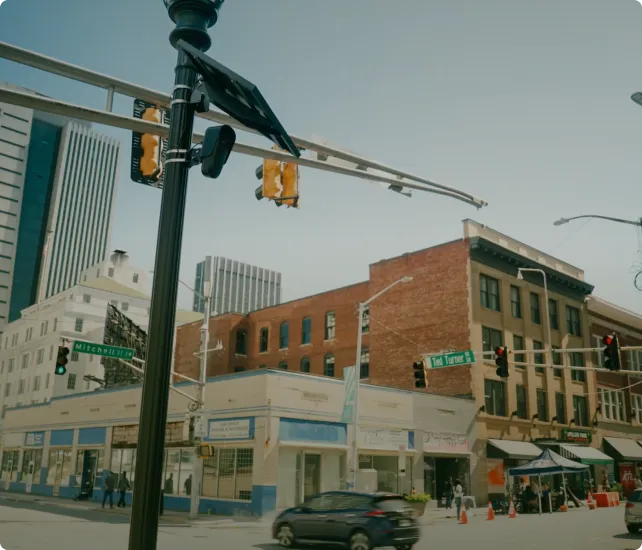


Internal vs. External Theft: What Retailers Need To Know
Understand the difference between internal and external theft in retail. Learn how each type impacts your business and what steps you can take to prevent both.
Retail theft doesn’t always come from outside the store. While shoplifting and smash-and-grabs tend to grab headlines, some of the most damaging losses happen from within, committed by employees with access to stockrooms, registers, and system overrides.
Both internal and external theft contribute significantly to shrinkage, but they’re often examined in isolation. Retailers that focus on only one side of the problem may be missing critical vulnerabilities in the other.
Preventing theft in retail stores starts with understanding where it’s coming from — inside the store, outside it, or both. Here, we break down the key differences between internal and external theft, how each typically occurs, and what to look for on both fronts.
What’s the difference between internal and external theft?
Internal theft, also known as employee theft, is committed by staff members. External theft, by contrast, involves people outside the business, such as customers or those involved in organized retail crime (ORC).
While both contribute to shrinkage, they differ in several key ways:
- Methods: Internal theft may involve skimming from the cash register, stealing merchandise, misusing employee discounts, or sharing business information with ORC groups. External theft includes shoplifting, ORC hits, smash-and-grab incidents, and return fraud.
- Detection difficulty: Employee theft is often harder to spot because it can be disguised within legitimate transactions.
- Access: Employees have broad access to retail businesses — including stock rooms, security systems, and point of sale (POS) systems — which can lead to significant losses over time. External actors typically only access public areas like sales floors or fitting rooms.
With the average internal theft incident costing $2,180, it’s clear that external theft isn’t the only threat to your bottom line. That’s why it’s crucial for retail businesses to implement security measures that address both.
How external theft typically happens in retail
External theft takes many forms, from quick grab-and-go incidents to coordinated efforts by ORC groups. Understanding these tactics is the first step toward stopping them.
Below are common types of external theft and prevention strategies that can help reduce their impact.
Shoplifting and concealment theft
Shoplifting is one of the most common forms of retail theft. In 2023, retailers reported between 177 and 1,000 incidents per day. It can happen in a variety of ways, including:
- Concealing items under clothes or on the body.
- Using foil-lined booster bags to avoid triggering security systems.
- Hiding items inside the packaging of other products.
- Switching or removing price tags entirely.
Most shoplifting is opportunistic — customers taking advantage of limited security measures. But some cases are coordinated, especially when high-value items are involved.
To reduce the risk of shoplifting incidents, consider installing RFID tags on high-value merchandise, designing your store layout to improve visibility, offering employee training to spot behavioral red flags (such as nervous glancing or loitering), and assigning more staff to high-target areas like fitting rooms.
Smash-and-grab incidents
Smash-and-grabs happen fast. Offenders break windows or display cases to steal high-value items (like electronics or jewelry) and flee with the help of a getaway driver.
To reduce the risk of repeat incidents, focus on exterior visibility. Install security cameras or license plate readers (LPRs) to capture vehicle information and set up alerts when known vehicles return so your security team can respond immediately.
Other theft prevention measures worth considering include:
- Anchoring high-target items to fixtures.
- Using reinforced glass to secure high-value displays.
- Limiting store access outside business hours, when many smash-and-grabs occur.
- Building strong relationships with local law enforcement to encourage rapid response.
Parking lot and vehicle-based theft
Not all theft happens inside the store. Some offenders target shopping carts, delivery trucks, or vehicles belonging to customers and employees. These incidents can erode trust, damage your reputation, and result in significant losses.
That’s why it’s important to secure external areas just as thoroughly as your store. Install parking lot cameras to monitor activity, LPR cameras to capture vehicle data — such as makes, models, and license plates — and post signage reminding employees and customers to lock their vehicles.
How internal theft typically happens in retail
Internal theft can be incredibly damaging over time due to repeated abuse. It accounts for 28.5% of shrinkage, adding up to millions in losses across the retail industry.
That’s why it’s crucial to implement security measures that help prevent employee theft early. Below are some of the most common forms of internal theft, along with practical prevention tips:
Direct theft of cash or merchandise
Internal theft can involve stealing cash from the register, skipping item scans to pocket the money, or removing merchandise from stock rooms and hiding it under clothing, in lockers, or near exits.
To reduce this risk, consider the following prevention measures:
- Run background checks during the hiring process to flag past theft.
- Conduct regular surprise audits to catch inventory discrepancies early.
- Limit access to stock rooms and cash registers.
- Address workplace factors that may contribute to theft, such as low wages or toxic working environments.
Discount abuse and fraudulent transactions
Not all employee theft is direct. Some cashiers and floor staff may steal indirectly by applying unauthorized discounts, processing fake refunds, tampering with barcodes to lower prices, or voiding items without reason.
To deter this type of theft:
- Use POS monitoring software to flag anomalies like excessive refunds or voids.
- Rotate employees between roles, alternating between floor and cash register assignments.
- Require management approval for high-value refunds.
Collusion with external actors
Collusion occurs when employees work with external actors, often ORC groups, to enable theft. This can include tipping off crews about your store’s schedule or high-value shipments, holding exit doors open, or advising family and friends on which products to target to avoid detection.
One of the most effective ways to deter collusion is by using visibility tools like LPR cameras in high-risk areas such as loading docks. LPRs can capture vehicle information and help uncover patterns. For example, if the same vehicle repeatedly appears during a specific employee’s shift and again during theft incidents, your team can connect the dots and identify potential internal involvement.
Additional ways to limit risk include installing access control systems, setting up anonymous reporting channels, and assigning more security guards to loading zones during high-value deliveries.
Why internal theft is often harder to detect
Internal theft is often harder to detect than external theft because employees have legitimate access to retail stores and their systems. In fact, 44% of retailers reported an increase in internal theft — highlighting growing awareness of the risks inside the store, not just outside.
Unlike external offenders, retail employees can move freely through stock rooms and cash registers without raising suspicion. They’re also more likely to understand where security cameras and LPRs are placed, how inventory is tracked, and when security teams are off the floor. Some may even override permissions, allowing them to alter logs or bypass security systems.
Because of these advantages, internal losses can be substantial and may go undetected for long periods. To prevent this, regularly test your systems for vulnerabilities, encourage staff to report suspicious behavior, and rotate roles so no employee becomes too comfortable in a single position.
The impact of both types of theft on retail businesses
Both internal and external theft can have lasting effects on business operations beyond just inventory shrinkage. Common impacts include:
- Financial losses: Theft reduces inventory and cuts into profitability.
- Inventory management issues: It can lead to stockouts and distorted sales data, making forecasting less accurate.
- Reputational damage: Frequent incidents and product shortages may make a store appear unprepared or unreliable to customers.
- Team morale issues: Theft can erode employees’ sense of safety, affecting overall satisfaction and productivity.
- Lost time: Serious events like smash-and-grabs may force temporary closures and require extensive coordination with law enforcement.
The good news is that both types of theft can be deterred and better managed with the right tools. Flock Safety’s LPR cameras help reduce external threats by capturing and sharing vehicle details with your security team in real time. Our AI-powered video cameras can also detect and alert staff to human presence in restricted areas.
With FlockOS, you can connect data across all your Flock systems and share it seamlessly with local law enforcement to support faster investigations and more effective responses.
Reduce shrink on every front with smarter prevention
With internal theft nearly as common and costly as external theft, retailers can’t afford to address one while ignoring the other. Effective retail loss prevention means taking a comprehensive approach that protects your store from both employee and customer threats. That includes optimizing store layout for visibility, conducting audits, encouraging staff to report suspicious activity, and installing visibility tools in high-risk areas like loading docks.
Flock Safety supports retail security with solutions designed to expand visibility and accelerate response. Our LPR cameras capture vehicle details to help identify repeat offenders, while our AI-powered video cameras alert teams to human activity in restricted areas. Through FlockOS, security teams can also share data across systems with law enforcement in real time.
Ready to take a smarter approach to loss prevention? Schedule a demo to see how Flock Safety helps reduce internal and external theft incidents!





Contact us
Discover how communities across the country are using Flock to reduce crime and build safer neighborhoods.

.webp)



.webp)





